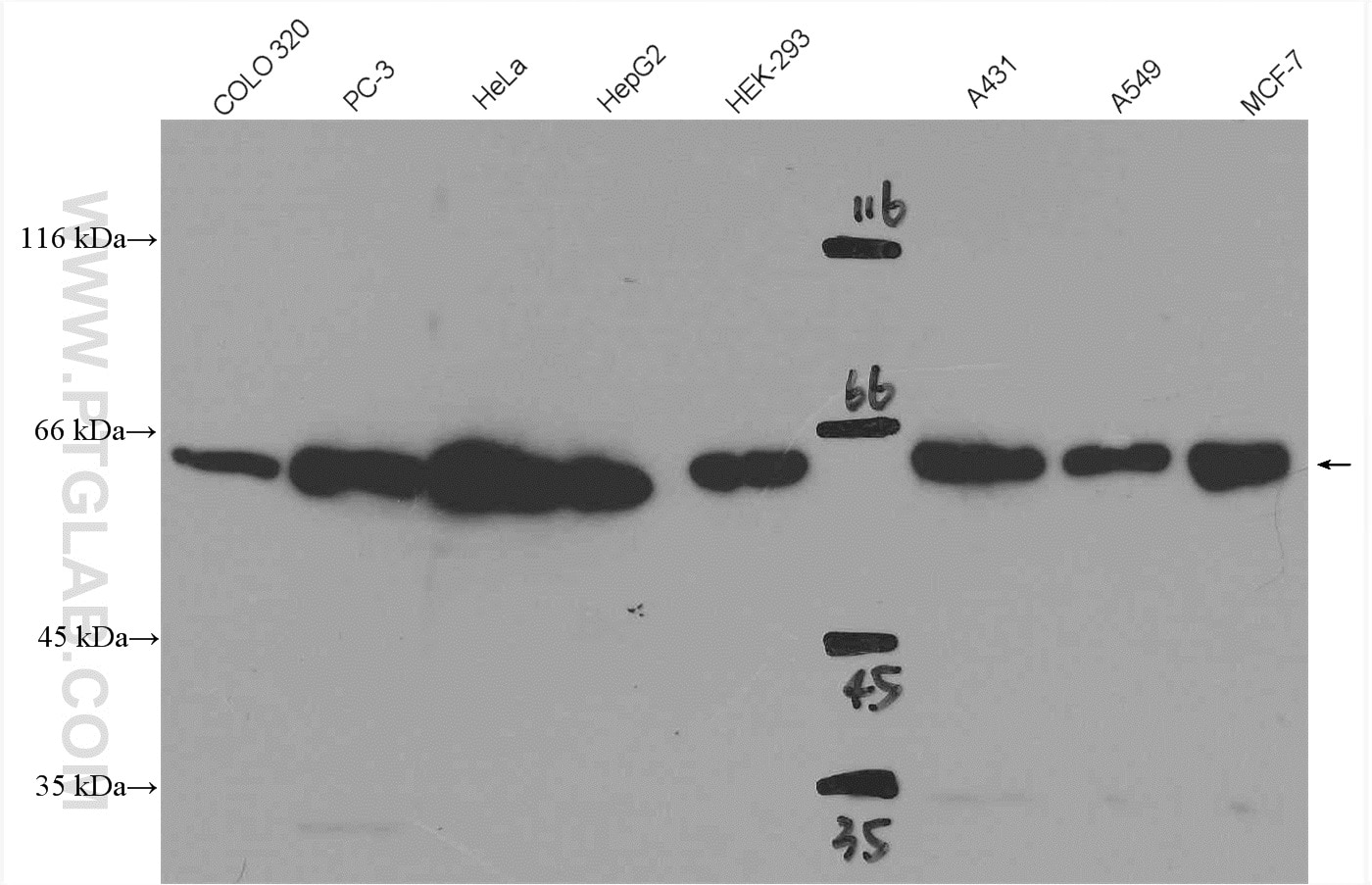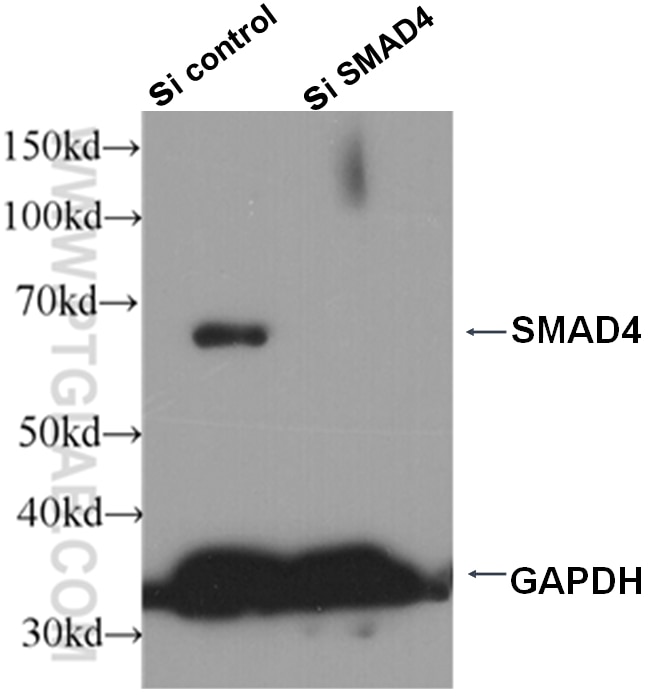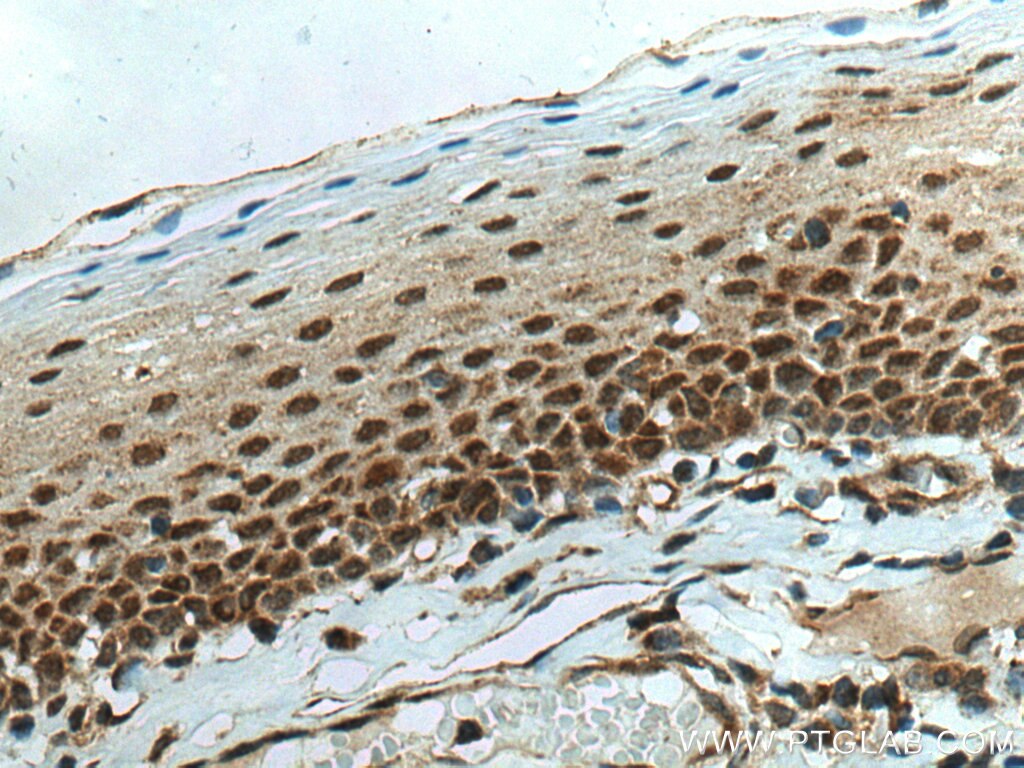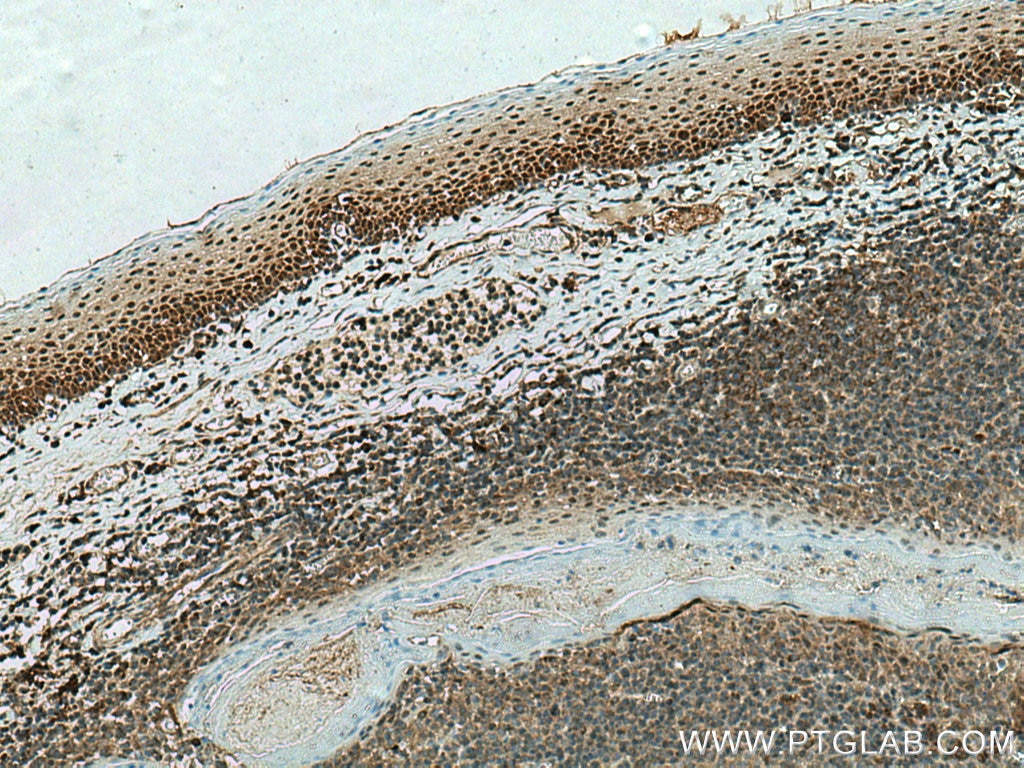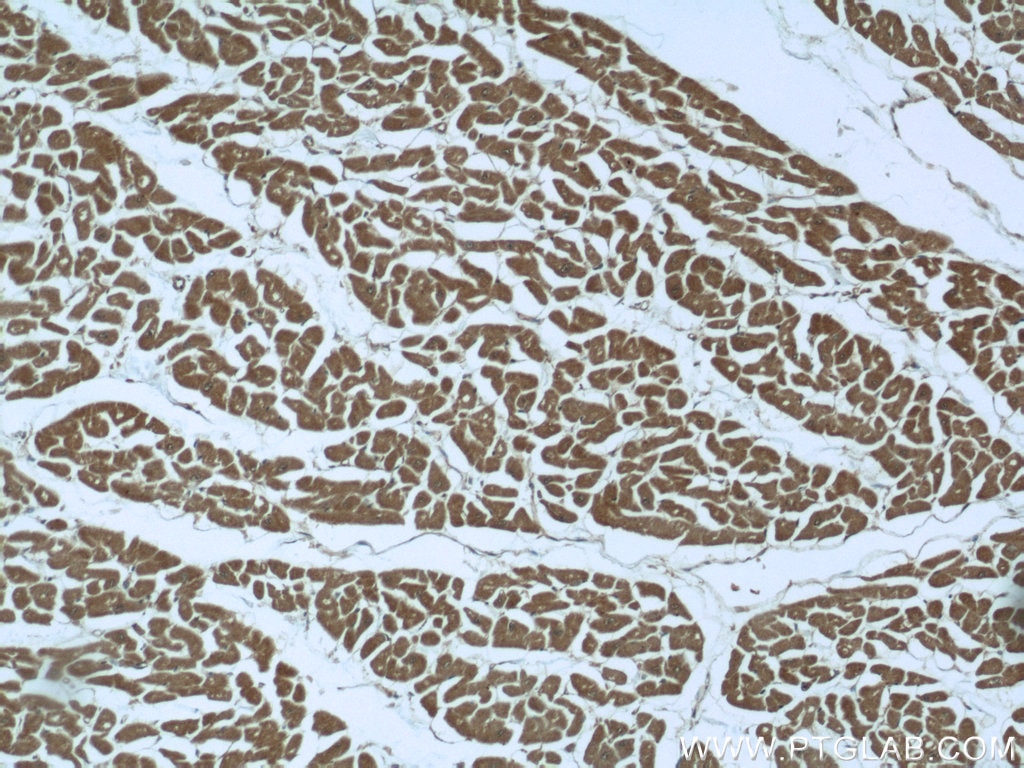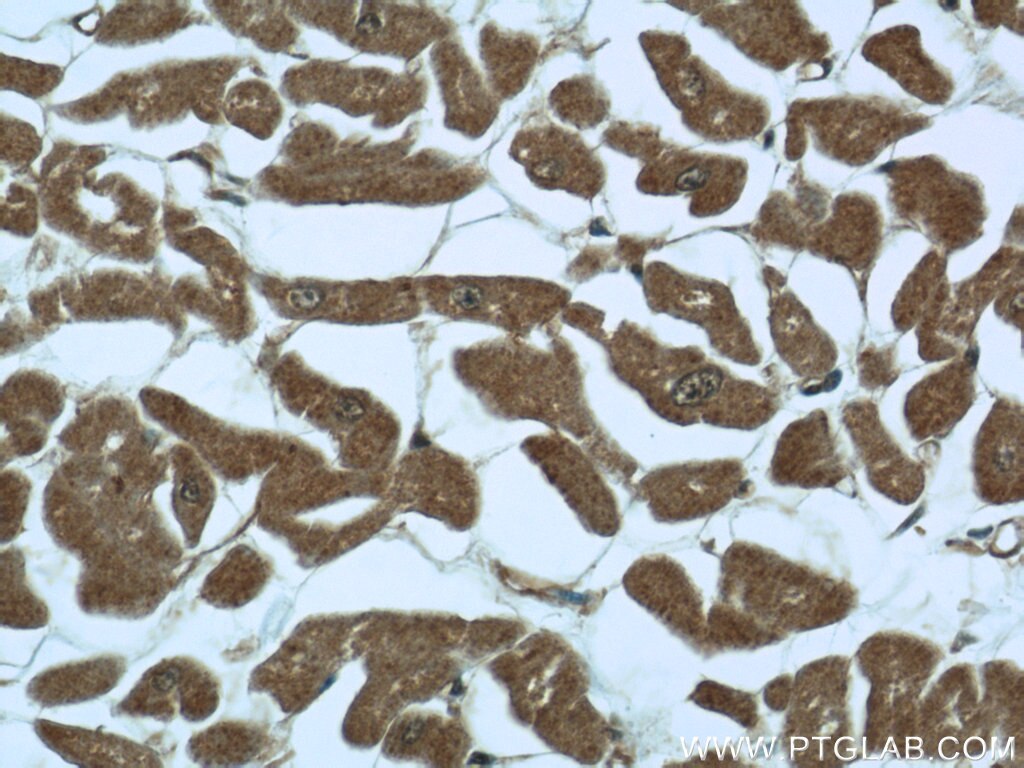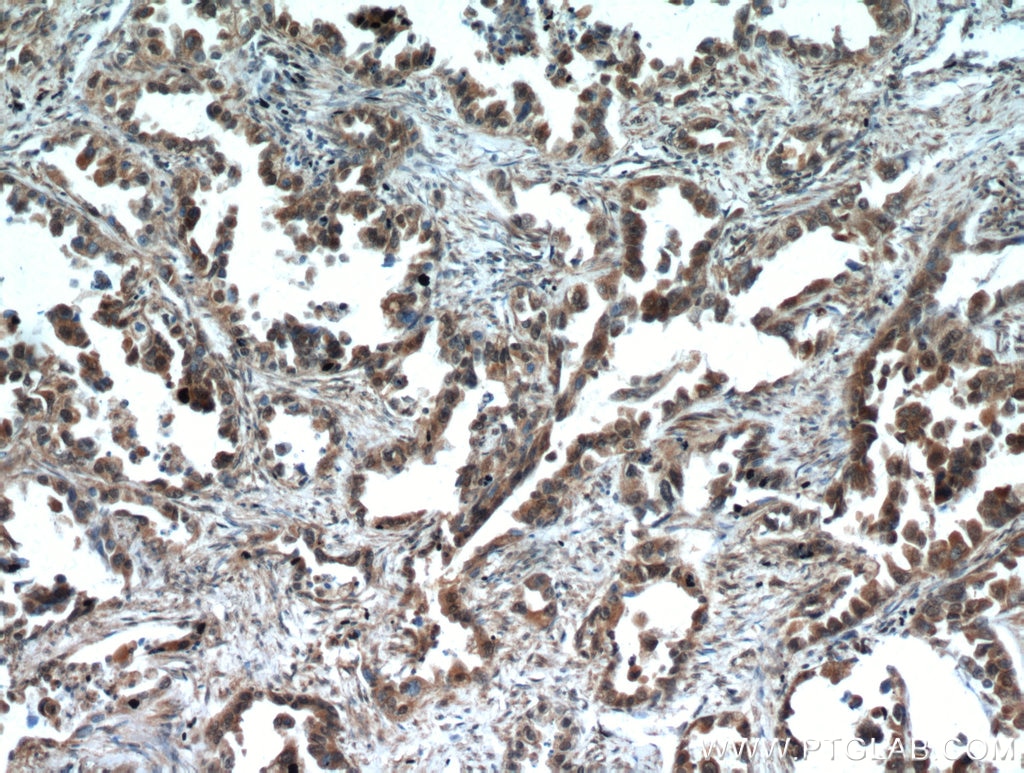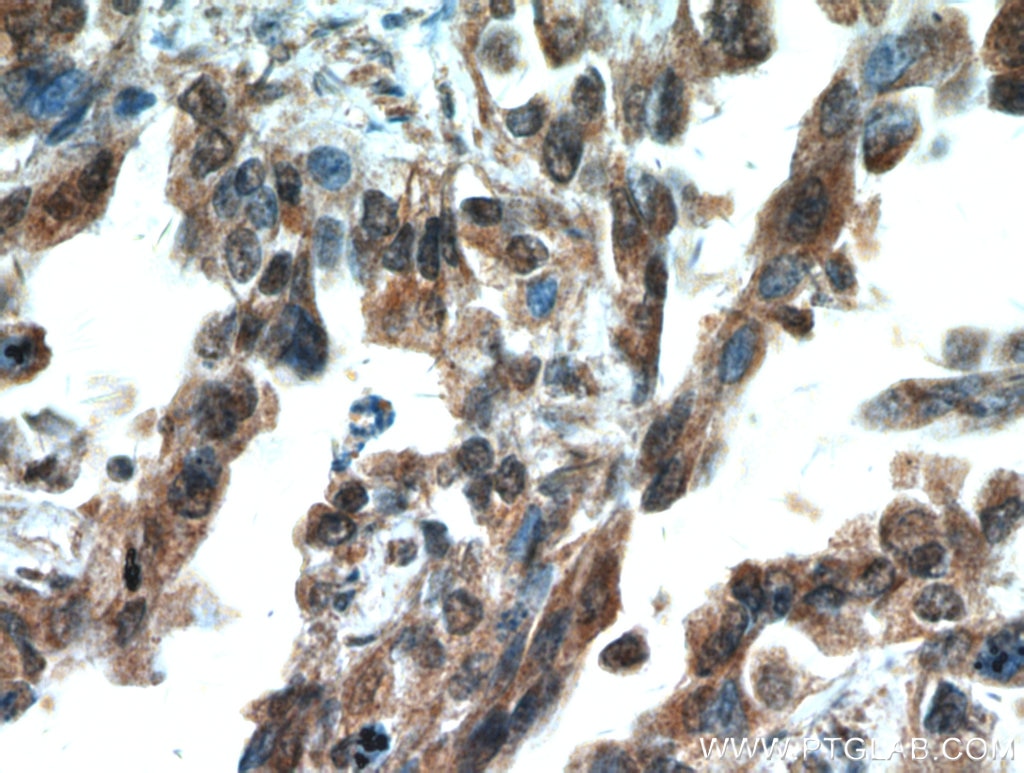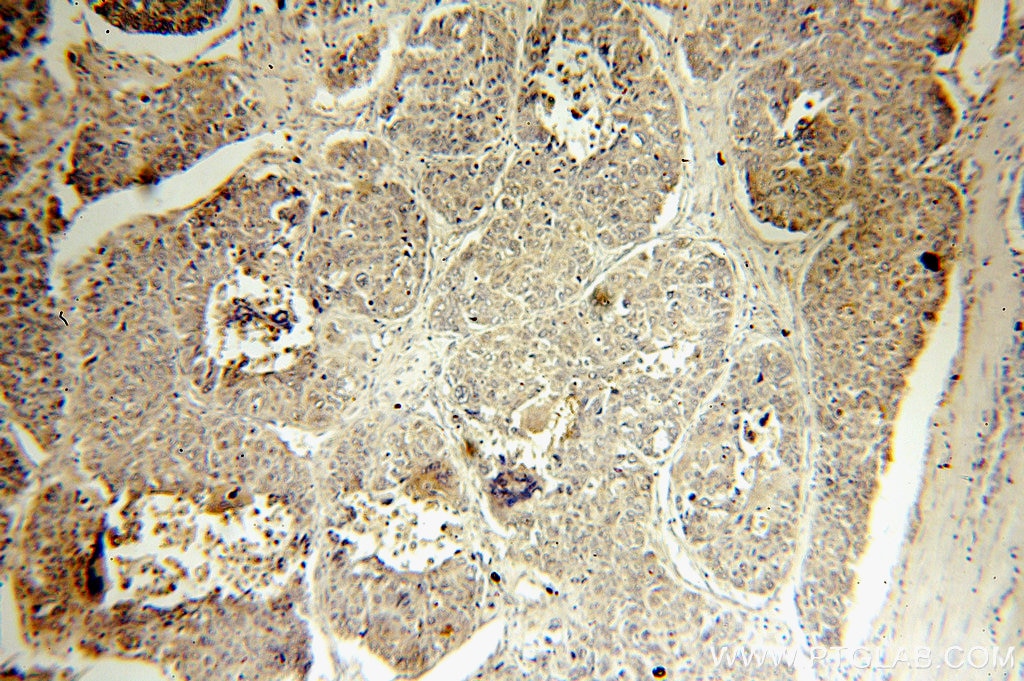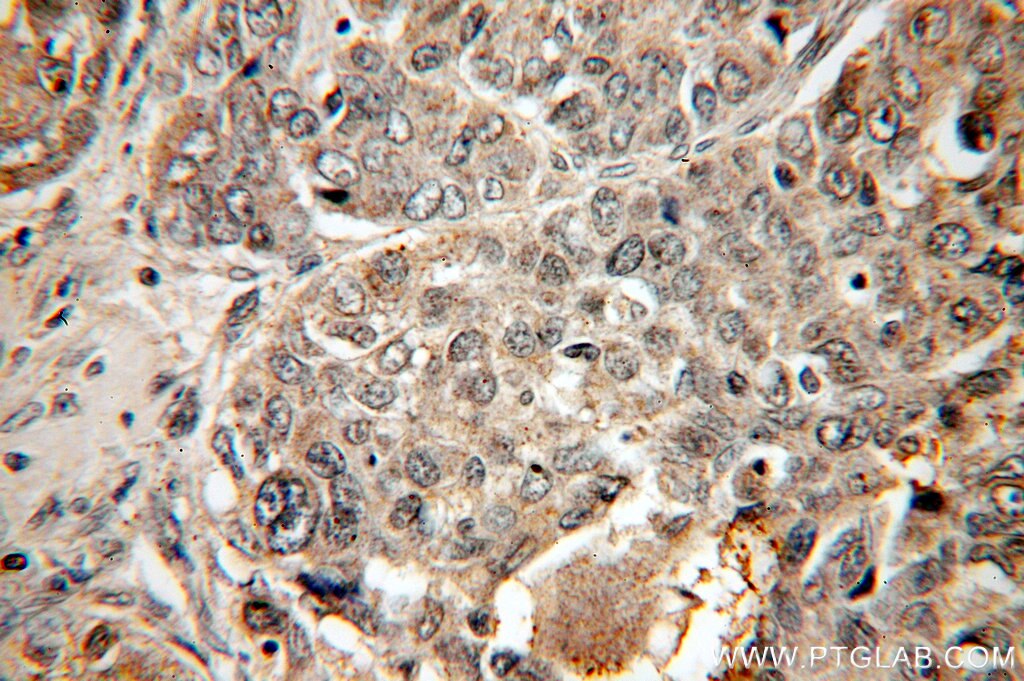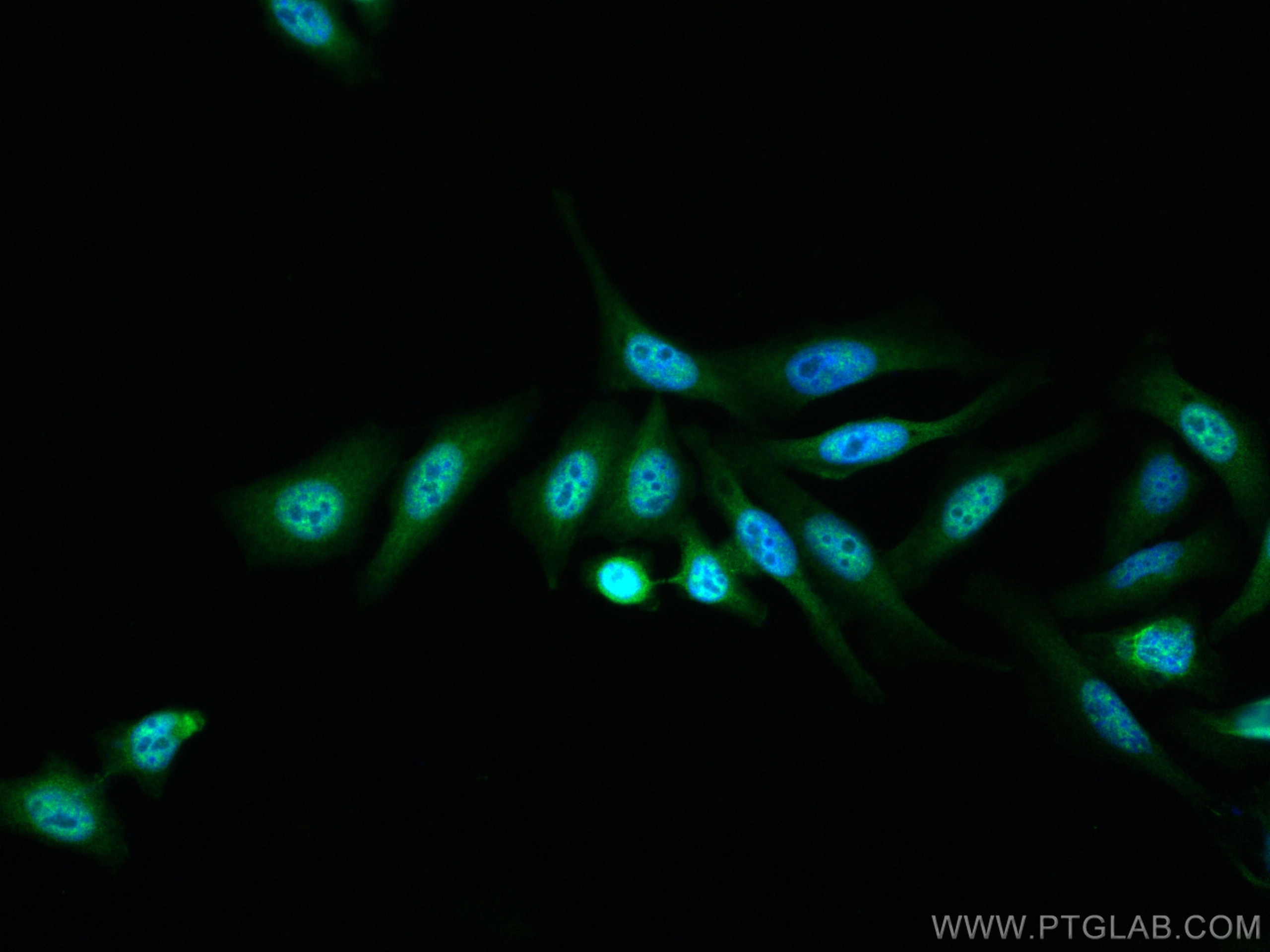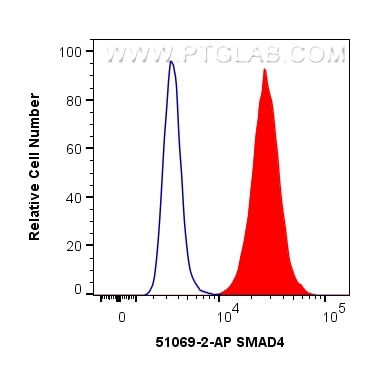Anticorps Polyclonal de lapin anti-SMAD4
SMAD4 Polyclonal Antibody for FC, IF, IHC, WB, ELISA
Hôte / Isotype
Lapin / IgG
Réactivité testée
Humain, souris et plus (1)
Applications
WB, IHC, IF, FC, ELISA
Conjugaison
Non conjugué
N° de cat : 51069-2-AP
Synonymes
Galerie de données de validation
Applications testées
| Résultats positifs en WB | cellules HeLa, cellules A431, cellules A549, cellules COLO 320, cellules HEK-293, cellules HepG2, cellules MCF-7, cellules PC-3 |
| Résultats positifs en IHC | tissu d'amygdalite humain, tissu cardiaque humain, tissu de cancer du foie humain, tissu de cancer du poumon humain il est suggéré de démasquer l'antigène avec un tampon de TE buffer pH 9.0; (*) À défaut, 'le démasquage de l'antigène peut être 'effectué avec un tampon citrate pH 6,0. |
| Résultats positifs en IF | cellules HepG2, |
| Résultats positifs en cytométrie | cellules HepG2, |
Dilution recommandée
| Application | Dilution |
|---|---|
| Western Blot (WB) | WB : 1:500-1:2400 |
| Immunohistochimie (IHC) | IHC : 1:50-1:500 |
| Immunofluorescence (IF) | IF : 1:200-1:800 |
| Flow Cytometry (FC) | FC : 0.50 ug per 10^6 cells in a 100 µl suspension |
| It is recommended that this reagent should be titrated in each testing system to obtain optimal results. | |
| Sample-dependent, check data in validation data gallery | |
Applications publiées
| WB | See 3 publications below |
| IF | See 3 publications below |
Informations sur le produit
51069-2-AP cible SMAD4 dans les applications de WB, IHC, IF, FC, ELISA et montre une réactivité avec des échantillons Humain, souris
| Réactivité | Humain, souris |
| Réactivité citée | rat, Humain, souris |
| Hôte / Isotype | Lapin / IgG |
| Clonalité | Polyclonal |
| Type | Anticorps |
| Immunogène | Peptide |
| Nom complet | SMAD family member 4 |
| Masse moléculaire calculée | 60 kDa |
| Poids moléculaire observé | 63 kDa |
| Numéro d’acquisition GenBank | BC002379 |
| Symbole du gène | SMAD4 |
| Identification du gène (NCBI) | 4089 |
| Conjugaison | Non conjugué |
| Forme | Liquide |
| Méthode de purification | Purification par affinité contre l'antigène |
| Tampon de stockage | PBS avec azoture de sodium à 0,02 % et glycérol à 50 % pH 7,3 |
| Conditions de stockage | Stocker à -20°C. Stable pendant un an après l'expédition. L'aliquotage n'est pas nécessaire pour le stockage à -20oC Les 20ul contiennent 0,1% de BSA. |
Informations générales
Mammalian homologs of the Drosophila Mad gene include Smad1, Smad2, Smad3, Smad4 (DPC4), Smad5, Smad6, Smad7 and Smad8. Smad1 and Smad5 are effectors of BMP2 and BMP4 function while Smad2 and Smad3 are involved in TGF and activin-mediated growth modulation. Smad4 has been shown to mediate all of the above activities through interactionwith various Smad family members . Smad6 and Smad7 regulate the response to activin/ TGF signaling by interfering with TGF -mediated phosphorylation of other Smad family members. This antibody is a rabbit polyclonal antibody raised against a peptide mapping within human SMAD4.
Protocole
| Product Specific Protocols | |
|---|---|
| WB protocol for SMAD4 antibody 51069-2-AP | Download protocol |
| IHC protocol for SMAD4 antibody 51069-2-AP | Download protocol |
| IF protocol for SMAD4 antibody 51069-2-AP | Download protocol |
| FC protocol for SMAD4 antibody 51069-2-AP | Download protocol |
| Standard Protocols | |
|---|---|
| Click here to view our Standard Protocols |
Publications
| Species | Application | Title |
|---|---|---|
Glia αV integrins in Schwann cells promote attachment to axons, but are dispensable in vivo. | ||
Chemosphere PFOS-induced placental cell growth inhibition is partially mediated by lncRNA H19 through interacting with miR-19a and miR-19b. | ||
Biochim Biophys Acta Mol Basis Dis Deficiency of M-LP/Mpv17L leads to development of β-cell hyperplasia and improved glucose tolerance via activation of the Wnt and TGF-β pathways. | ||
Physiol Res Fluid Shear Stress-Induced Down-Regulation of miR-146a-5p Inhibits Osteoblast Apoptosis via Targeting SMAD4 |
